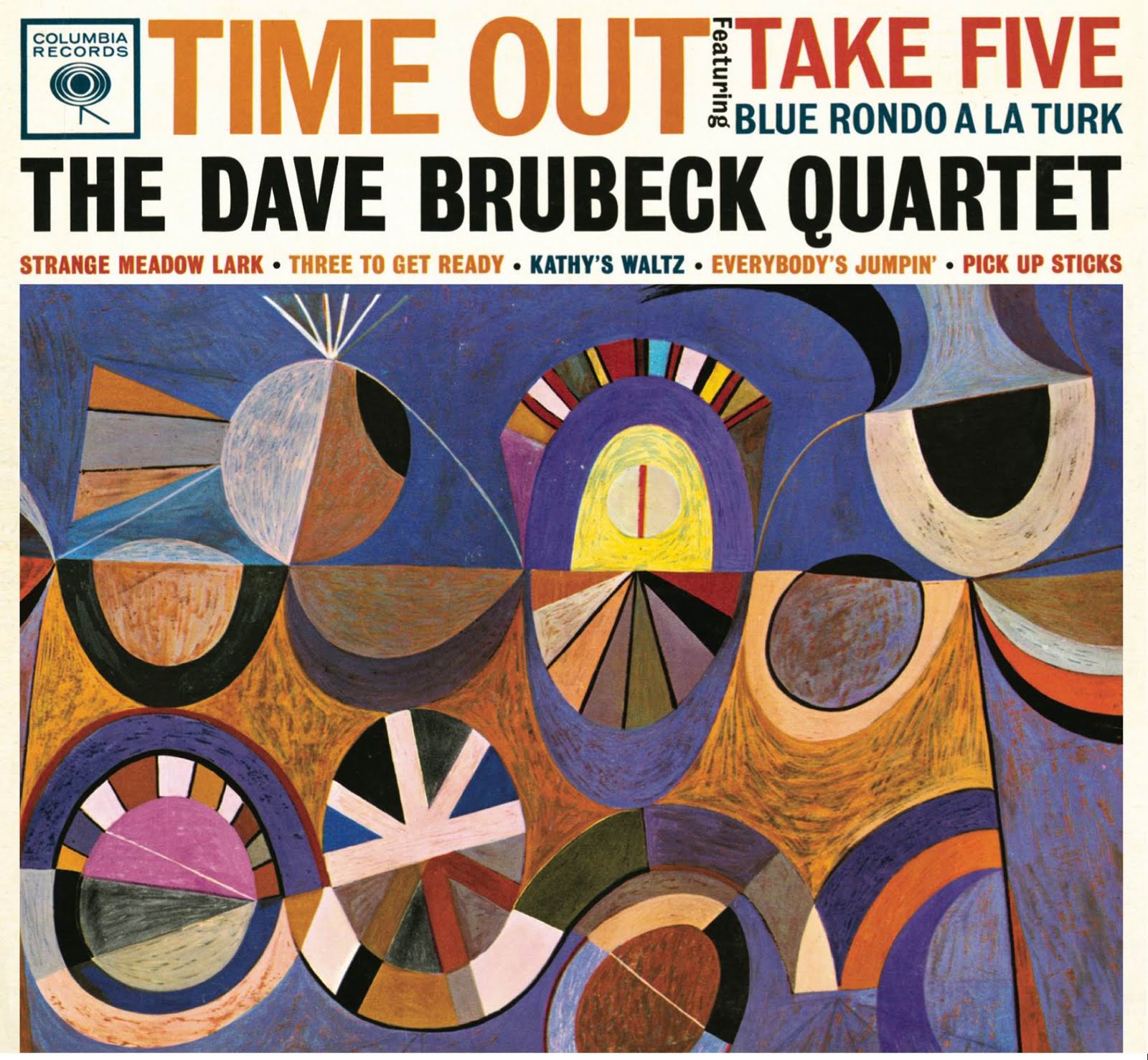

(1) Brubeck (p) Paul Desmond (as) Eugene Wright (b) Joe Morello (d). (1) Blue Rondo À La Turk Strange Meadowlark Take Five Three To Get Ready Kathy’s Waltz Everybody’s Jumpin’ Pick Up Sticks (2) Audrey (41.42) Quartet, with Paul Desmond (alto sax), Norman Bates (bass), Joe Morello (drums) 1957. Not to be missed in the unlikely event that you don’t already have it. Quartet, with Paul Desmond (alto sax), Norman Bates (bass), Joe Dodge (drums) in concert album shared with the J. A new lease of life perhaps, but it hasn’t been out of print since 1959. This release has good sound on 180-gram vinyl, new notes and brightly coloured cover. It’s odd then that shortly beforehand the altoist had gone to Brubeck and said “Either he goes or I go.” The reply was “He’s going nowhere.” This quartet stayed together until the late 1960s.

Take Five was written by Desmond as a feature for Joe Morello. And how did the quartet manage to make playing in 5/4 sound so natural and easy? The bonus track Audrey indicates just how important the change of bass and drums was. Brubeck’s mix of jazz and classical lines required just this measure of support. His solo work on the iconic Take Five consists of short, snappy fragments that are rhythmically exciting but tasteful. Morello’s drums were never about thundering solos at lightning speed but subtlety. Wright was a straightahead bassist with a big sound but without anything fancy. Can you imagine a Brubeck quartet with Jackie McLean on alto, Mingus on bass and Art Blakey on drums? Desmond’s unique, sweet and cool alto was just right. The choice of personnel too was crucial to Brubeck’s plan and these musicians are ideal for this music. The music overall is totally unique to Brubeck, logical in construction and indicates that his music was designed to come out the way it does. This happens more than once and it is noticeable that although exotic time signatures are spotlighted, most solos are in standard time. This album was all about unusual time signatures, and it tears away in 9/8 but as soon as Paul Desmond starts his solo, he’s in a swinging 4/4. Not far behind, in the runner-up spot was Brubeck’s Time Out the single from this LP, Take Five, was the first million-selling jazz record.īlue Rondo À La Turk is up first. Top of the list though and still the bestselling jazz album of all time was Miles Davis’s Kind Of Blue. Few albums in jazz history are as giant as the Dave Brubeck Quartets Time Out (Columbia, 1959). Recent albums by The Dave Brubeck Quartet Gone With the Wind + Jazz Impressions of Eurasia At Storyville 1954 London Flat, London Sharp The Crossing So. The framing treatment consists of a simple white profile molding. Mingus recorded Ah Um, Coltrane taped Giant Steps and Ornette Coleman produced his first Atlantic disc with his own group, The Shape Of Jazz To Come. Large oil on canvas depicting the famous abstract painting, originally painted by Neil Fujita (1921-2010) for the 1959 Dave Brubeck Quartet's stellar album, Time Out. Brubeck uses this album to fully explore compound time signatures. 1959 was a bumper year for classic jazz recordings. The abstract cover art and extensive song-by-song liner notes make for a nice complete piece.


 0 kommentar(er)
0 kommentar(er)
